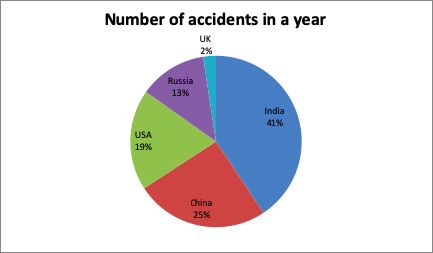Cancer is a life-threatening and dreadful disease affecting approximately 2.5 million people living in India. This disease is dangerous enough to affect the peace and happiness of one’s life. However, many effective medical technologies, treatments related to cancer have started giving a ray of hope in this case and this makes cancer insurance important.
Cancer Insurance is a special type of fixed benefit insurance plan which helps in the management of the financial crisis associated with the treatment of cancer. Cancer insurance policies are designed in such a way that they help in offering comprehensive coverage against cancer. This insurance plan will help the policyholder with financial support for treatment-related issues in case of a financial emergency.
There are two basic types of health insurance plans in India- Indemnity health plans and fixed benefit health insurance plans. Indemnity health plans pay for the expenses incurred by the insured on hospitalization and the fixed benefit health plans pay on the occurrence of ailment. Since cancer insurance plan is a Fixed Benefit health insurance plan, it can be taken alongside an indemnity health insurance plan for hospitalization coverage. This type of plan pays the entire sum insured after survival of 30 days from the diagnosis of a certain specified severity of cancer.
Cancer cover plan offers coverage against the various expenses which are associated with the various stages of cancer such as the diagnosis, treatment which can include hospitalization, chemotherapy, etc. The benefits associated with cancer policy can be availed at the various stages of the disease. In general terms, it is advisable to keep yourself prepared to face financial crises associated with such dreadful diseases by the purchase of cancer insurance.
Features and benefits of cancer insurance
The major benefits of buying a cancer insurance plan can be listed below.
- Cancer cover plan offers comprehensive insurance associated with cancer.
- In the case of the purchase of cancer insurance, the insurance coverage will continue after the early stage of cancer has been diagnosed.
- There is an increased sum assured for Cancer insurance policies.
- There is a benefit of waiver of premium for the duration of around 3 years to 5 years during the entire policy term.
- There are some cancer insurance plans which tend to offer an income benefit up to 5 years for covering the cost of daily expenses of the household.
- On the diagnosis of cancer, a lump sum is paid to the policyholder.
- If there are no claims made during a year, then there is an increase in the sum assured by a certain percentage.
- Policyholders can avail tax benefits under Section 80D of the Income Tax Act, 1961.
Cancer insurance v/s critical illness insurance plans
Cancer insurance and critical illness insurance are both types of health insurance plans. Both the plans cover cancer and pay a lump sum benefit on its diagnosis yet they are quite different from one another. Let’s understand how these plans differ from each other –
Cancer insurance | Critical illness insurance |
This plan covers only cancer. If you suffer from any other illness, you would not get coverage | This plan covers a range of critical illnesses, including cancer. If you suffer from any covered illness, you would get covered and a claim would be paid |
Minor stage, mid-stage and advanced-stage cancers are covered by the plan | This plan covers cancer of a specified severity which is usually the major stage cancer |
A part of the sum insured is paid in case of minor stage cancer and the premiums are usually waived off. The plan continues and if cancer advances, the rest of the sum insured is paid | If you are diagnosed with cancer, 100% of the sum insured is paid and the plan is terminated |
These plans are generally offered by life insurance companies. However, there are some health insurers too who have launched a cancer-specific policy | These plans are issued by both life and health insurance companies |
So, critical illness insurance plans have a wider scope of coverage compared to cancer insurance plans. However, they might not cover minor stage cancers and this is where a cancer cover plan proves to be beneficial. So, understand your coverage needs and then opt for a suitable plan.
How to buy cancer insurance plans?
To apply for a cancer cover plan, there are two major methods.
- Physical means of applying for insurance
Firstly, an applicant can visit the nearest insurance provider’s offices and find out about the various cancer insurance plans. Then he can obtain the application form and fill in the required details. The necessary documents need to be submitted and then on the premium payment cancer insurance purchase would be successfully done.
Another convenient method is the online method of cancer insurance purchase. You can compare various cancer insurance plans online and then you need to choose between buying a new policy, renewing your existing health plan or porting the existing health insurance plan from your existing insurer to a new one.
Then, depending upon your requirements, you can fill in the details online. Then a list of possible health plans, based on your requirement along with premium, features and benefits would be displayed. You would then need to compare and choose the best plan that suits your needs. Then, on the payment of premium, the purchase of a cancer insurance policy is completed.
Documents needed while applying for cancer cover plan are listed below.
- Age Proof – Voter ID card, PAN Card, Aadhar Card, Passport, Birth Certificate, Driving License, etc.
- Identity Proof – a Voter ID card, Passport, Driving License, Aadhar Card, etc.
- Address Proof – Driving License, Passport, Ration Card, PAN Card, Aadhar Card, etc.
- Medical Reports
- Recent coloured passport-sized photographs
- Form filled and signed
Moreover, before you buy a cancer insurance plan, here are some of the major things which need to be considered-
Since the cost of treatment associated with cancer is very high, it is advisable to choose a cancer policy with a high sum assured. Usually, cancer policy will provide a sum assured between Rs. 10 lakhs to INR 50 lakhs. Policyholders should ensure that the sum assured provided must cover all expenses starting from the cost of hospitalization to the cost incurred for chemotherapy as well.
- Cancer policy should cover multiple stages
Before a policyholder purchases cancer insurance, he should check out that the coverage provided by the cancer insurance plan should be for all the stages involved in cancer such as the minor stage, major stage, and the critical stage.
- Free-look period and policy flexibility
The cancer cover plan which is chosen to be purchased should provide an adequate free-look period within which the policyholder can read or check the terms and conditions and even cancel the cancer policy on dissatisfaction.
The cancer policy should provide flexibility in terms of premium payment i.e. either on a monthly, quarterly or yearly basis. Also, the cancer policy should help the policyholder in availing tax benefits under Section 80D of the Income Tax Act, 1961.
Since the procedure of diagnosis and cancer treatment is a long procedure, the policyholders should consider the term of the cancer insurance plan while the purchase of the plan. It should have a longer-term to cover the entire period of treatment of the disease.
- Your medical history should align with your cancer policy
It is advisable that a policyholder should opt for the purchase of a cancer policy only when the genetic conditions or the environmental conditions make him prone to have cancer. Moreover, an applicant for cancer insurance should be aware that skin cancer and cancer caused by sexually transmitted diseases are not covered by the cancer policy.
Eligibility criteria for buying cancer insurance:
In general, the minimum age for being eligible to purchase a cancer insurance plan is 18 years and the maximum eligible age is 65 years.
Cancer insurance in India offers coverage for all types of cancer except for a few such as skin cancer or cancer caused due to sexually transmitted diseases. But, in case if an applicant for cancer insurance is having some pre-existing disease history then the insurance provider will not consider him eligible for the policy. Moreover, the eligibility for cancer insurance also depends on factors such as an applicant’s medical records, applicant’s lifestyle and his family history of cancer.
Furthermore, if a person applies for cancer insurance after being diagnosed with cancer then his application for cancer insurance would not be accepted by the insurance providers.
What is covered under cancer insurance plans?
Cancer insurance plans cover the illness of cancer. They usually cover all types of cancer and that too in all stages. In case of the mild stage, a part of the sum insured is paid, usually, 25%, to help you avail the treatments that you need. Future premiums are also waived off so that you can avail coverage without any financial burden. If, on the other hand, you are diagnosed with a major stage cancer, the full sum insured is paid so that you can avail the best treatments. Moreover, there are optional riders too which help in enhancing the coverage offered by the policy. Riders like family income benefit, hospital daily allowance, etc. can opt with critical illness plans for a good scope of coverage.
Cancer insurance plans are fixed benefit plans which pay the full sum insured irrespective of the actual medical costs that you suffer. Moreover, the plans are independent of other health insurance plans which you might have and pay the claim even if you are covered under another policy. So, you can buy a cancer insurance plan as a supplemental plan to avail a comprehensive scope of coverage against cancer.
What is not covered under cancer insurance plans?
Cancer insurance plans do not cover any other illness except cancer. So, if the insured does not suffer from cancer during the policy tenure, no claim would be paid. Moreover, the basic hospitalisation costs and other pre-existing conditions are not covered by the policy. So, know these exclusions when you buy a cancer insurance plan so that you know exactly what are you getting covered for. Other exclusions include the following –
- Coverage for skin cancer is not available
- Cancer suffered due to sexually transmitted diseases would not be covered
- Congenital cancers would not be covered
- Cancer due to nuclear and radioactive contamination would not be covered
- Pre-existing cancers would not be covered
List of top #7 Cancer Insurance plans in India
Let us list down some of the Cancer Insurance plans available in India.
- Aegon Life iCancer Insurance Plan
The major benefits which can be availed under the Aegon Life iCancer Insurance are listed below:
- This cancer policy provides coverage against all categories of cancer except that of skin cancer
- A policyholder can make multiple claims for different types of cancer
- The Aegon Life iCancer Insurance provides coverage for all the stages of cancer i.e. major, minor and critical stages
- Policyholders can avail tax benefits under Section 80D of the Income Tax Act, 1961
- The minimum age for purchase of the Aegon Life iCancer Insurance is 18 years and the maximum age is 65 years. The maturity age of the Aegon Life iCancer Insurance is 70 years. The minimum term of the policy is 5 years and the maximum term is 70 years. The minimum sum assured is Rs. 10, 00,000 and the maximum sum assured is Rs. 50, 00, 00. The premium can be paid either annually or monthly and the term of premium payment will remain the same as that of the policy.
- Future Generali Cancer Protect Plan
Some of the major features associated with the Future Generali Cancer Protect plan are mentioned below:- The sum assured for major lives can be Rs. 10 lakhs, Rs. 20 lakhs, Rs. 30 lakhs or even Rs. 40 lakhs
- In the case of minors, the sum assured offered by the Future Generali Cancer Protect Plan is Rs. 10 lakhs
- The eligibility age bracket for major lives is between 18 years to 65 years whereas for minors the eligibility age bracket is 1 year to 17 years
- There are two modes for the payment of premium i.e. One- time payment mode or Annual and Monthly premium payment mode
- In the case of Single premium payment frequency, the policy term is for 5 years. If the premium payment frequency is regular for major lives the policy term can be for 10 years, 15 years, 20 years or 80 years minus the age of entry into the policy. For minors, the policy term is 18 minus the age of entry into plan or 10 years whichever is higher
- Maximum coverage is offered by the policy until the age of 80 years
- HDFC Life Cancer Insurance Plan
The important features of the HDFC Life Cancer Insurance can be enlisted as below:- The HDFC Life Cancer Insurance offers 100% payment of Sum assured on the diagnosis of cancer
- There are provisions for lower rates of premium if the sum assured is more than Rs. 10 lakhs
- For those customers purchasing the Insurance policy online, there is a discount of 5.5% on the policy’s premium
- The cancer policy has 3 options i.e. Silver, Gold, and Platinum. For all the three options, 25% of the sum assured is paid on the diagnosis of cancer in minors along with a waiver of the insurance premium for 3 years. Similarly, for the diagnosis of cancer in major lives 75% or 100% of the sum assured is paid on the diagnosis of cancer
- The minimum eligible age for purchase of the policy is 18 years and the maximum age limit is 65 years
- The minimum maturity age for the policy is 28 years and the maximum age is 75 years
- The minimum term of the policy is 10 years and the maximum term is 20 years
- ICICI Prudential Cancer Insurance Plan
In ICICI Prudential Cancer Insurance, a lump sum is paid to the policyholder on the diagnosis of cancer. However, the lump-sum payment is based on the condition of the patient and never exceeds 100% of the sum assured
- In the case of minors, on the diagnosis of cancer, there is a provision of a waiver of insurance premium
- The eligible age bracket for availing the benefits of the ICICI Prudential Cancer Insurance is 20 years to 60 years
- The sum assured to be paid to policyholders on the diagnosis of cancer is from a range of Rs. 5 lakhs to Rs. 25 lakhs
- The tenure of the policy can be from 10 years to 70 years and the premium payment can be done either annually, half-yearly or on a monthly basis
- PNB MetLife Cancer Insurance Plan
The salient features of the policy include the following –
- The minimum age for the purchase of this cancer Insurance is 18 years whereas the maximum age limit is 65 years
- The sum assured amount in the case of PNB MetLife Cancer Insurance lies between Rs. 5 lakhs to Rs. 40 lakhs
- The term of the policy can be from 10 years to 70 years
- The payment of premiums can be done either yearly, half-yearly or monthly
- SBI Life Sampoorn Cancer Suraksha Plan
The salient features and benefits offered by the plan include the following –
- The minimum entry age for this cancer policy is 18 years and the maximum age is 65 years
- The minimum sum assured amount is Rs. 10, 00,000 and the maximum amount is Rs. 50, 00,000
- The tenure of the SBI Life Sampoorn Cancer Suraksha plan is from 5 years to 30 years
- The premium payment for cancer insurance can be done either half-yearly, quarterly or monthly
- Birla Sun Life Insurance Cancer Shield Plan
This policy has the following benefits for you –
- The minimum eligible age for this cancer policy is 18 years and the maximum eligible age is 65 years
- The minimum sum assured amount is Rs. 10, 00,000 and the maximum amount is Rs. 50, 00,000
- The tenure of this cancer insurance is for 5 years to 20 years
- The premium payment for cancer insurance can be done either half-yearly, quarterly or monthly.
Why choose Turtlemint for buying cancer insurance?
Turtlemint is an online platform which allows you the best choice of cancer insurance policy for your coverage needs. On Turtlemint’s platform, you can compare and find the best policy which not only offers the most comprehensive coverage benefits but is also light on your pockets. Here are some benefits which Turtlemint offers when you buy cancer insurance plans –
- An option to choose the best policy as Turtlemint is tied-up with all leading insurance companies
- Personalised assistance in buying the plan through Turtlemint’s dedicated customer care department
- Step-by-step guidance in choosing the right policy by Turtlemint’s expert executives
- Assistance at the time of claims ensuring that your claim process is simple and smooth
So, if you are looking to buy the best cancer insurance plan, choose Turtlemint and get the best policy.
Frequently Asked Questions
- Can a policyholder of cancer insurance policy avail tax benefits?
Yes, cancer insurance policyholders can avail of a tax deduction of up to INR 25, 000 under Section 80D of the Income Tax Act, 1961. If you are aged 60 years and above, this deduction limit increases to INR 50,000
- Can cancer policy be applied by persons smoking cigarettes?
Yes, cigarette smokers can avail of the benefits of cancer policy but on the payment of a higher premium.
- What are the exclusions in a cancer insurance plan?
The exclusions in a cancer insurance plan are mentioned below:
- Skin cancer is not covered under a cancer insurance plan
- Any type of cancer has been caused by sexually transmitted diseases such as AIDS
- Cancer which might have been caused due to pre-existing conditions, congenital conditions, nuclear contamination, contact with radioactive compounds, chemical contamination, etc.
- Can a policyholder include cancer insurance along with his existing health insurance plan?
Yes, a policyholder can supplement his existing health insurance policy with a separate cancer insurance plan.
- Do cancer insurance plans have a waiting period?
Yes, most of the cancer insurance plans have a waiting period of 30 days.



















